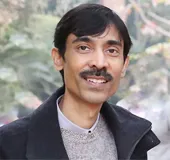
Unfortunately, many Indian cities are consistently figuring in the top 10 of world’s most polluted cities list of WHO at least since 2010, despite many serious efforts from government and interventions from courts.
Till recently, Beijing and Dhaka too had figured high, but with interventions from their respective governments, now these cities have moved out of the top category.
The inferior air quality in many regions of India is harming the population, environment, and economy. A large number of people, mainly poor communities, are suffering from chronic respiratory diseases, with adverse impacts on their lives.
Delhi, India’s capital city, as well as neighbouring cities of Bhiwadi, Faridabad, Ghaziabad, Gurugram, and NOIDA continue to record very high air pollution levels.
The critical question that comes up is, why are Indian cities, especially the national capital, facing the serious problem of air pollution? Why are interventions from governments and courts not helping improve air quality as needed?
It is not that there has been no serious effort. Numerous legal, regulatory and institutional measures have been initiated, and schemes implemented since early 1980s. But the results are far from encouraging. It needs to be understood why the administration is unable to respond effectively, and what needs to be done to improve the situation.
The data generated by CPCB for Delhi indicates the presence of pollutants in air for most days in a year, however autumn and winter, months from October to February are worst. During these five months, AQI values increase phenomenally, implying very poor air.
Four aspects determine Delhi’s air quality – geographical location, climate, land use/cover, and human activities. The proximity of Himalayan ranges in north and Thar Desert in northwest greatly influence weather and air quality.
Regional storms are a common phenomenon in summers and high wind velocities bring dust from far and near. The dust finally settles with onset of monsoon rains. Air quality in Delhi region is generally better during rainy season from end of June until September.
Thereafter, from autumn until end of winter, moisture in air reduces, wind speeds decline, and temperatures drop. Such weather conditions lead to trapping of air (containing dust and emissions) in lower atmosphere.
Inefficiencies in land use planning and management also lead to rising air pollution. Large tracts of land in/around Delhi remain unoccupied, unused or barren for long periods. During dry season, when winds blow or when motor vehicles move, loose dust particles on vacant patches of land, including land along roadsides/highways, mix with air and pollute the environment. People who walk, cycle, use two wheelers or work in open areas are at high risk of inhaling the pollutants in the air.
Proper landscaping and road designing, plantations, and construction of drains, footpaths, and cycle lanes can be useful measures for pollution prevention and mitigation.
Delhi-NCR region has few natural resources - forests, hills, surface water bodies. These have the ability to reduce the spatial spread and distribution of pollution. There are, however, instances of these valuable resources being exploited for housing and infrastructure development. The violations occur despite existence of protection laws for such areas.
Stringent monitoring of land under resources by using appropriate technology (such as aerial photos and remote sensing), and disciplinary action against violators are urgently needed.
In addition to above, numerous human activities cause air pollution round the year. To mention a few, a large and growing number of private/commercial motor vehicles in Delhi and neighbouring cities emit noxious pollutants. This happens because the vehicles run on petrol and diesel. Traffic management inefficiencies worsen the situation.
The gaps in reform measures need to be urgently addressed. For example, the switchover to CNG as automotive fuel for all public transport vehicles began in 2001. Several private car owners also switched over to CNG. However, till date, due to insufficient number of gas filling stations and lengthy filling time, long queues of auto rickshaws and cars can be seen at the stations. As a result, preference for CNG is less, because obtaining petrol/diesel is quicker.
Similarly, many industrial/power plants and brick kilns in Delhi region run on inferior fuels, and several polluting industries operate illegally within city limits. These emit toxic fumes. Despite a mandatory requirement, several units are yet to take steps to shift to better fuels, meet desired emission standards, retrofit old plants, or install emission-monitoring systems.
In the construction sector, a boom is seen in residential, commercial, and infrastructure development in Delhi’s neighbourhood. The construction activities generate dust to the extent that visibility deteriorates. Many companies flout norms and fail to comply with dust control measures, such as on-site green barriers, water sprinkling, etc.
Other common practices affecting air quality are removal of green cover for new construction, burning of solid waste and dry leaves, manual street sweeping, and use of diesel gen sets. Delhi administration has begun to use mechanical street sweeping machines on select road corridors, but these too generate enormous dust during suction process!
Further, burning of firecrackers (on Diwali), despite a ban, and crop residue (stubble) by farmers in States surrounding Delhi cause a suffocating smog in the entire region. The toxic effects of such seasonal activities are worsened by climatic conditions in autumn and winter months.
An emission inventory released by Ministry of Earth Sciences in October 2018 highlights transport and industrial sectors as two biggest sources of air pollution in NCR. Other contributors are thermal power plants, residences, and windblown dust, as well as human practices of burning solid waste, using cow dung as cooking fuel, and brick-making using inferior fuels.
In the publications of government, one can find information on various types of sectoral solutions (technical, managerial, participatory) for controlling air pollution in Delhi and NCR. News stories further inform us of implementation of some solutions from time to time, such as shift to cleaner fuels, electric vehicles, continuous emission monitoring systems, waste-to-energy plants, increase in green cover, etc. The impact of these efforts will be seen in times to come.
However, prevailing conditions remain unsatisfactory. Though not true, at times it is felt that no agency administers the city/region, and there is almost zero impact of any of the government’s policies/programmes aimed at combating air pollution.
With winter approaching in North India, when the air pollution situation is most likely to worsen like it does every year, it is an ideal time for the administration in Delhi, Haryana, Punjab, Rajasthan and Uttar Pradesh to review: (i) the numerous methods followed in solving the problem; (ii) assess the impact of on-going initiatives, and (iii) intensify their efforts. In this regard, some pointers are provided below.
Controlling population growth: The high levels of air pollution in Delhi region is mainly due to concentration of large population and economic activities. The cities in the region offer work opportunities to rich and poor. It is projected that Delhi could be the world’s most populous urban agglomeration by 2028 with a population of 37.2 million. The future policy should be to control the growth of population in NCR cities, which can be achieved by developing villages, small and medium towns in the region. Such development is lagging behind due to which NCR cities constantly experience in-migration. In addition, the region would benefit if various human activities that have created the problem are carried out in a better and responsible manner so that minimum damage is caused to the environment.
Applying a regional and collaborative approach: Since air pollution in Delhi is a regional issue, and not city-specific, a regional approach needs to be applied. It will be ideal for various central/state/local government departments to work together, and engage with citizens, research institutions, and private companies. Further, the expertise of regional planners must be utilised, since proper land use planning at the regional level can help enormously in improving air quality. The regional plan of NCR and city plans should contain policy directions for various administrative agencies – transport, industry, construction, sanitation, environment, agriculture, etc. Presently, too many action plans prepared by stakeholders are creating confusion, and implementation of sustainable solutions is minimal.
Designing and applying sustainable solutions: Whether it is the transport or power or any other sector, sufficient efforts are not being made by the administration to design and apply sustainable solutions. Without providing proper alternatives, citizens are expected to operate in a certain manner. Those who are unable to follow the guidelines are treated as law violators. The administration needs to seriously address numerous grey areas. Reliable, safe, affordable, eco-friendly, and clean public transportation facilities are not available to the regional population. Power supply and sanitary situation in NCR cities is abysmal. Availability of cleaner fuels, such as CNG, is lacking. Cheap and convenient options for disposal of agricultural residue by farmers are not provided.
Thus, the adhoc style of city/regional planning, development, management and governance will not lead to achieving the national level target of 20 to 30 percent reduction of PM2.5 and PM10 concentration by 2024 as proposed under the 2019 National Clean Air Programme (NCAP).
Unless the planning and administrative agencies display excellence in performing their roles, there is every possibility that air pollution is likely to rise in the coming years. Cities in China and Bangladesh were able to demonstrate improvement in air quality because the civic agencies formulated an effective plan and implemented it with care.
Several problems created by powerful natural forces are beyond human control, but there is scope for eliminating harmful human activities responsible for causing air pollution.
Clearly, greater actions by government agencies and citizens are needed if the goal of ensuring clean air is to be achieved.
The views expressed above belong to the author(s). ORF research and analyses now available on Telegram! Click here to access our curated content — blogs, longforms and interviews.




 PREV
PREV


